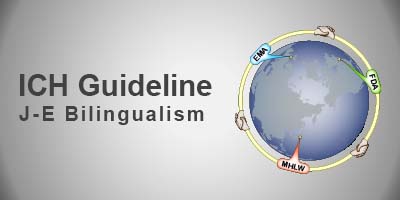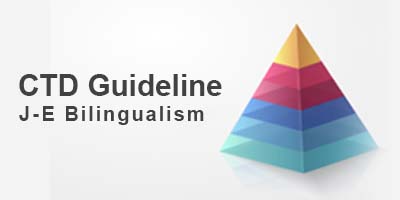平成7年5月24日 薬審第592号
(各都道府県衛生主管部(局)長あて 厚生省薬務局審査課長通知)
ICH Harmonised Tripartite Guideline
Having reached Step 4 of the ICH Process at the ICH Steering Committee meeting on 27 October 1994, this guideline is recommended for adoption to the three regulatory parties to ICH
致命的でない疾患に対し長期間の投与が想定される新医薬品の治験段階において安全性を評価するために必要な症例数と投与期間
本ガイドラインの目的は,致命的でない疾患の治療のために長期間の投与(6カ月以上にわたり継続的に,または繰り返し間歇的に)が想定される新医薬品の安全性を評価するために必要と考えられる基本原則を提示することである。新医薬品の治験段階での安全性評価においては,承認後に想定される長期間の投与に相当する適当な期間にわたって,当該医薬品の安全性の側面を明確かつ定量的に評価することが期待されている。従って,そのために必要となる症例数の規模を決定する際には,医薬品の投与期間,有害事象の発現時期と程度との相関関係が重要な検討事項となる。
The Extent of Population Exposure to Assess Clinical Safety for Drugs Intended for Long-Term Treatment of Non-Life-Threatening Conditions
The objective of this guideline is to present an accepted set of principles for the safety evaluation of drugs intended for the long-term treatment (chronic or repeated intermittent use for longer than 6 months) of non-life-threatening diseases. The safety evaluation during clinical drug development is expected to characterise and quantify the safety profile of a drug over a reasonable duration of time consistent with the intended long-term use of the drug. Thus, duration of drug exposure and its relationship to both time and magnitude of occurrence of adverse events are important considerations in determining the size of the data base necessary to achieve such goals.
本ガイドラインの目的のためには,短期投与試験で得られた有害事象*1に関するデータと同時対照のない試験の場合が多い長期投与試験で得られたデータとを区別して考察することが有用である。短期間のうちに発現する有害事象の発現率(例えば,3カ月間の累積発現率が約1%)が明らかにされることが期待されている。当該医薬品を長期にわたり投与すると発現率が変わってくるような事象については,その重症度及び医薬品の有効性と安全性の総合的評価(リスク・ベネフィット アセスメント)における重要性を勘案して,その特徴を明らかにすることが必要な場合もある。一方,治験段階での安全性評価においては,例えば1,000例に1件未満の割合で発現するような稀な有害事象を検出することは期待されていない。
For the purpose of this guideline, it is useful to distinguish between clinical data on adverse drug events (ADEs) derived from studies of shorter duration of exposure and data from studies of longer duration, which frequently are non-concurrently controlled studies. It is expected that short-term event rates (cumulative 3-month incidence of about 1%) will be well characterised. Events where the rate of occurrence changes over a longer period of time may need to be characterised depending on their severity and importance to the risk-benefit assessment of the drug. The safety evaluation during clinical drug development is not expected to characterise rare adverse events, for example, those occurring in less than 1 in 1000 patients.
治験の実施計画により有害事象と当該医薬品との間の因果関係の判定が大きく影響されうる。例えば,プラセボを対照とした比較試験では,治験薬投与群での有害事象の発現率と,試験対象患者群でのバックグランドとしての事象発現率とを直接比較することができる。一方,実薬を対照とした比較試験では,両群間の有害事象発現率の比較は可能であるが,試験対象患者群でのバックグランドとしての事象発現率を直接評価することができない。また,同時比較対照群を置かない試験では,実際に発現した有害事象と治験薬との因果関係を評価することはさらに難しくなる。
The design of the clinical studies can significantly influence the ability to make causality judgements about the relationships between the drug and adverse events. A placebo-controlled trial allows the adverse event rate in the drug-treated group to be compared directly with the background event rate in the patient population being studied. Although a study with a positive or active control will allow a comparison of adverse event rates to be made between the test drug and the control drug, no direct assessment of the background event rate in the population studied can be made. A study that has no concurrent control group makes it more difficult to assess the causality relationship between adverse events observed and the test drug.
一般的な原則を以下に示す。
1.致命的でない疾患の治療に対し長期間の投与が想定される新医薬品の安全性データベースを作成するための症例数と投与期間について,各国のガイドラインを調和することは有益なことである。本ガイドラインは,多くの適応疾患及び薬効群を網羅するが,例外もある。
2.医薬品の安全性評価のためのガイドラインは,有害事象の発現と発見に関するこれまでに得られてきた経験,特定の発現頻度の有害事象を発見できる確率の統計学的考察及び実施可能性に関する考察に基づくものでなければならない。
3.個々の薬効群における治療期間と有害事象の発現との関係についての情報は,十分でない。そのため,今後の研究でこれらの情報を得ることは有益である。
4.これまでの情報では,ほとんどの有害事象は,投与開始後最初の数カ月の間に発現し,またこの期間での発現頻度が最も高い。治験薬を予定される臨床用量で6カ月間投与する症例の数は,投与期間中の有害事象の経時パターンが明確に把握できる規模に設定する必要がある。このためには,妥当な頻度(一般的には 0.5~5%程度)の遅発性の有害事象が観察できるとともに,より高頻度に発現した有害事象がその後の期間中に増加するのか,あるいは減少するのかを観察できるだけの十分な症例数が必要である。通常300~600例の対象症例数が適当である。
5.一般的ではないが,有害事象の中には投与期間が長くなるにつれて発現頻度または重症度が増すものがあり,また投与開始後6カ月以上経って初めて発現する重篤な有害事象もある。従って,治験薬を12カ月間投与して得られた成績も必要である。有害事象と投与期間の関係についての十分な情報がないため,1年間の経過観察を必要とする症例数は,一定の発現率の有害事象を発見する確率と試験実施の実現性に基づいて判断されることが多い。100例の患者に対して最低1年間投与して得られた成績は,安全性データベースの一部として採用できると考えられる。そのようなデータを得るためには,治験薬を予定される臨床用量で少なくとも1年間投与するように適切に計画されたプロスペクティブな試験を実施すべきである。1年間の投与期間中に何ら重篤な有害事象が認められない場合には,そのような有害事象の1年間の累積発現率は3%未満と考えてよい。
6.市販後調査により安全性に関するデータが収集されることも勘案して,短期投与も含め,治験薬が投与される総症例数は500~1,500例程度*2が望ましい。また,個別の医薬品の投与症例数は,その医薬品及び薬効群に関して得られる情報に基づいて決定することになる。
7.臨床における安全性を評価するための上記のような調和された一般的な基準が適用できない場合もかなりある。そのような例外が生じる理由及びその実例を以下に示す。この他にも同様の例があると思われる。また,有効性評価のために必要なデータベースには,本ガイドラインに規定されている安全性評価のために必要なデータベースに比べてより大規模,又はより長期の観察が必要とされる場合があることも認識すべきである。
例外
1)遅発性の有害事象,又は重症度や発現頻度が時間経過とともに大きくなる有害事象を引き起こすおそれがある医薬品の場合は,より大規模,長期間の安全性データベースが必要となる。それは下記に示す情報等により予測することができる。
① 動物試験のデータ
② 化学構造が類似する,又は同系統の薬効群に属する医薬品の臨床情報
③ 当該有害事象との関係が明らかな薬物動態学的または薬動力学的性質
2)予期される特定の低頻度の有害事象の発現率を推定する必要がある場合には,より大規模な長期間のデータベースが必要になる。特定の重篤な有害事象が類似の医薬品で認められている場合や,重篤な有害事象の発現を予想させるような事象が治験の初期段階で認められている場合も同様である。
3)以下のような場合には,有効性と安全性の総合的評価(リスク・ベネフィットアセスメント)のためにより大規模な安全性データベースが必要となる場合もある。
すなわち,当該医薬品の投与による有益性が,
① 小さい場合(例:あまり重篤でない疾患の症状の改善)
② 投与患者のうちのごく少数に限られる場合(例:健常人に対する予防的治療)
③ 明確に示されていない場合(例:代用(surrogate)エンドポイントで有効性が評価される場合)
4)すでにかなりの罹患率又は死亡率が背景として存在し,医薬品の投与がそれをさらに増加させるおそれのある場合には,基準となる罹患率又は死亡率からの事前に想定した増加を検出するのに十分な統計学的検出力が得られるように,十分な症例数を対象とした試験計画の作成が必要となることもある。
5)例えば対象患者数が少ない場合には,より少ない症例数でも差し支えない。
8.通常は,6カ月間投与して得られた成績をもって当該医薬品の承認申請を行うことが可能である。その場合は,12カ月間投与して得られた成績を承認前の可能な限り早い時点に追加提出しなければならない。
There was general agreement on the following:
- A harmonised regulatory standard is of value for the extent and duration of treatment needed to provide the safety data base for drugs intended for long-term treatment of non-life-threatening conditions. Although this standard covers many indications and drug classes, there are exceptions.
- Regulatory standards for the safety evaluation of drugs should be based on previous experience with the occurrence and detection of adverse drug events (ADEs), statistical considerations of the probability of detecting specified frequencies of ADEs, and practical considerations.
- Information about the occurrence of ADEs in relation to duration of treatment for different drug classes is incomplete, and further investigations to obtain this information would be useful.
- Available information suggests that most ADEs first occur, and are most frequent, within the first few months of drug treatment. The number of patients treated for 6 months at dosage levels intended for clinical use, should be adequate to characterise the pattern of ADEs over time. To achieve this objective the cohort of exposed subjects should be large enough to observe whether more frequently occurring events increase or decrease over time as well as to observe delayed events of reasonable frequency (e.g., in the general range of 0.5%-5%). Usually 300 – 600 patients should be adequate.
- There is concern that, although they are likely to be uncommon, some ADEs may increase in frequency or severity with time or that some serious ADEs may occur only after drug treatment for more than 6 months. Therefore, some patients should be treated with the drug for 12 months. In the absence of more information about the relationship of ADEs to treatment duration, selection of a specific number of patients to be followed for 1 year is to a large extent a judgement based on the probability of detecting a given ADE frequency level and practical considerations. 100 patients exposed for a minimum of one-year is considered to be acceptable to include as part of the safety data base. The data should come from prospective studies appropriately designed to provide at least one year exposure at dosage levels intended for clinical use. When no serious ADE is observed in a one-year exposure period this number of patients can provide reasonable assurance that the true cumulative one year incidence is no greater than 3%.
- It is anticipated that the total number of individuals treated with the investigational drug, including short-term exposure, will be about 1500. Japan currently accepts 500-1500 patients: the potential for a smaller number of patients is due to the post-marketing surveillance requirement, the actual number for a specific drug being determined by the information available on the drug and drug class.
- There are a number of circumstances where the harmonised general standards for the clinical safety evaluation may not be applicable. Reasons for, and examples of, these exceptions are listed below. It is expected that additional examples may arise. It should also be recognised that the clinical data base required for efficacy testing may be occasionally larger or may require longer patient observation than that required by this guideline.
Exceptions:
a. Instances where there is concern that the drug will cause late developing ADEs, or cause ADEs that increase in severity or frequency over time, would require a larger and/or longer-term safety data base. The concern could arise from:
(1) data from animal studies;
(2) clinical information from other agents with related chemical structures or from a related pharmacologic class;
(3) pharmacokinetic or pharmacodynamic properties known to be associated with such ADEs.
b. Situations in which there is a need to quantitate the occurrence rate of an expected specific low-frequency ADE will require a greater long-term data base. Examples would include situations where a specific serious ADE has been identified in similar drugs or where a serious event that could represent an alert event is observed in early clinical trials.
c. Larger safety data bases may be needed to make risk/benefit decisions in situations where the benefit from the drug is either (1) small (e.g., symptomatic improvement in less serious medical conditions) or (2) will be experienced by only a fraction of the treated patients (e.g., certain preventive therapies administered to healthy populations) or (3) is of uncertain magnitude (e.g., efficacy determination on a surrogate endpoint).
d. In situations where there is concern that a drug may add to an already significant background rate of morbidity or mortality, clinical trials may need to be designed with a sufficient number of patients to provide adequate statistical power to detect prespecified increases over the baseline morbidity or mortality.
e. In some cases, a smaller number of patients may be acceptable, for example, where the intended treatment population is small.
8. Filing for approval will usually be possible based on the data from patients treated through 6 months. Data on patients treated through 12 months must be submitted as soon as available and prior to approval in the United States and Japan but may be submitted after approval in the E.C.. In the U.S. the initial submission for those drugs designated as priority drugs must include the 12-months patient data.










